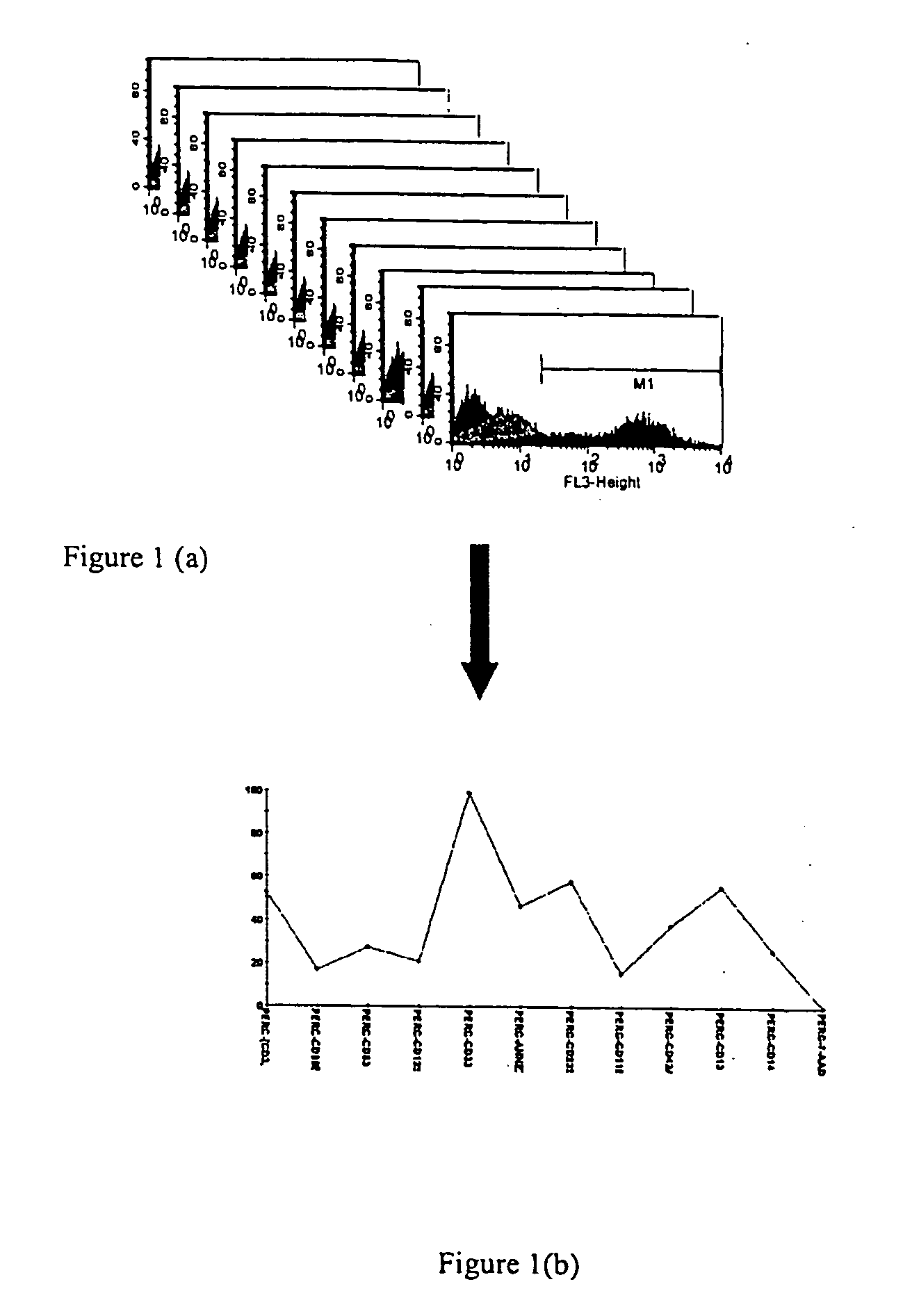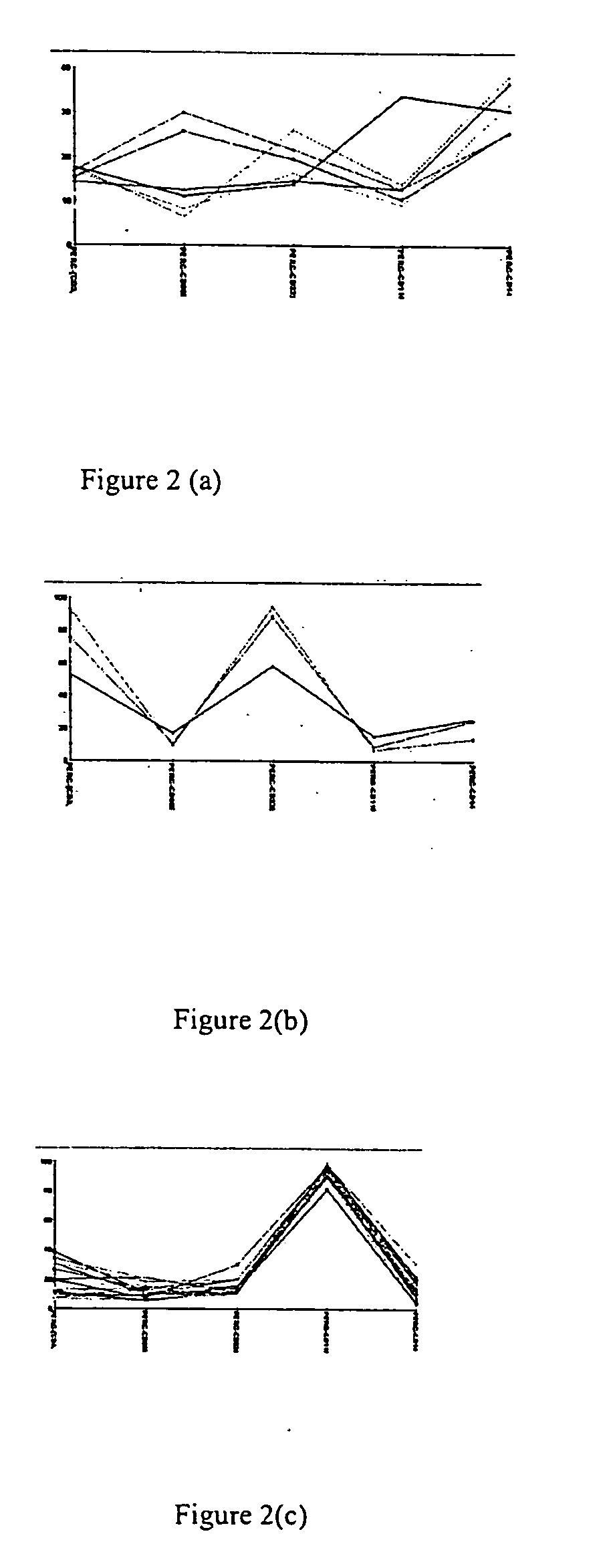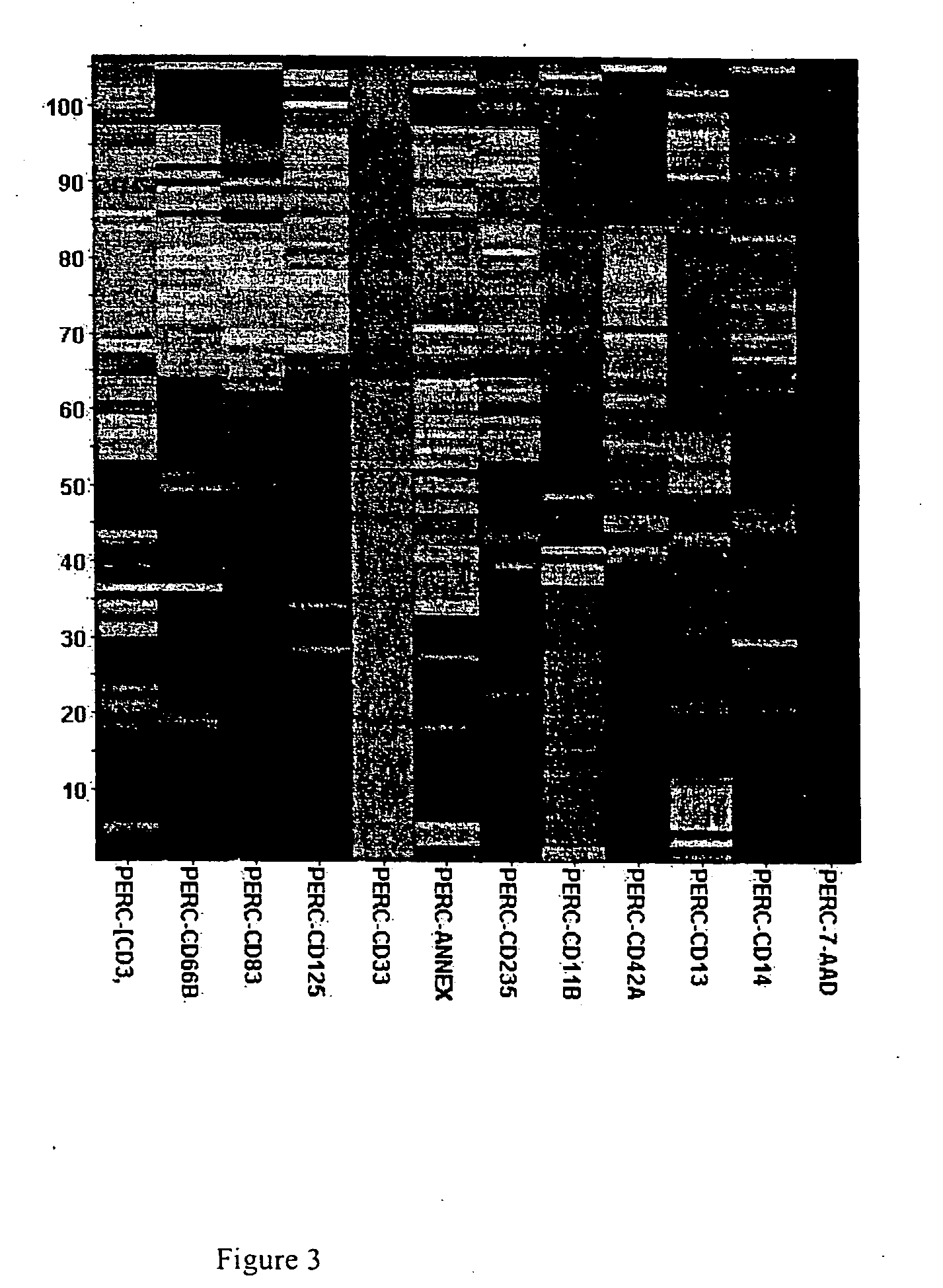Methods for identifying conditions affecting a cell state
a cell state and condition technology, applied in the field of methods, can solve the problems of difficult system testing of multiple factors, tedious and laborious traditional exploration into elucidating the various cellular factors responsible for cellular differentiation, and the unsatisfactory differentiation of undifferentiated cells, etc., and achieves rapid and efficient methods.
- Summary
- Abstract
- Description
- Claims
- Application Information
AI Technical Summary
Benefits of technology
Problems solved by technology
Method used
Image
Examples
example 1
Binary & Ternary Experiments to Examine Differentiation of a Cell
[0087] HL-60 cells were used to study what factors are involved in cellular differentiation. At day 0, the cells were plated in wells using a 96 well plate at a seeding density of approximately 60,000 cells, appropriate cell media was added. (See, Tables 1 & 2 below.) At day 2, the media was aspirated from the wells and fresh media was dispensed into the wells. Cells were induced with the factors in Table 1 and 2. At day 4, the cells were harvested and labeled with antibody (see Table 3) for cytometry. The labeling was accomplished by washing the cells with PBS (phosphate buffered saline). Then gamma globulin was used to block non-specific binding sites. The gamma globulin treatment lasted for approximately 20 minutes at room temperatures on a rocker shaker.
[0088] The antibody cocktail concentration for each antibody used was based on manufacturer's instruction adjusted for final cell number. The antibody cocktail w...
example 2
[0092] HL-60 cells were exposed to five well studied chemical differentiation factors (dimethylsulfoxide (DMSO), Vitamin D3, Phorbol-12-myristate-13-acetate (PMA), Sodium butyrate+pH 7.8, and all-Trans Retinoic Acid (ATRA)) known to promote differentiation along three distinct pathways (neutrophil, monocyte, eosinophil / basophil) within the myeloid lineage. Differentiation was induced by creating binary and ternary five factor combinations using the five factors at three concentrations for the binary experiment and two concentrations for the ternary experiment.
[0093] Following differentiation, morphological changes could be observed in wells containing combinations of differentiation factors as compared to control wells. For example, combinations containing PMA (16 nM)+sodium butyrate (600 μM), pH 7.8, produced aggregates of cells while PMA (81 nM)+sodium butyrate (600 μM), pH 7.8 did not.
[0094] To observe experiment-wide profiles of marker expression, we used the percentage of pos...
example 3
[0097] By querying the database, it was possible to find evidence of factor dominance. It was observed that when PMA+sodium butyrate (pH 7.8) were combined, a phenotype profile is produced which is most similar to that of PMA (FIG. 9a). However, the presence of PMA as a dominating factor in one combination, does not always predict how that factor will behave in other treatment paradigms. For example, when DMSO is combined with PMA, the phenotype signature is most similar to that of DMSO, indicating that for this treatment paradigm, DMSO acts as the dominating factor (FIG. 9b).
[0098] Evidence of non obvious interactions was found in which a profile for a combination treatment resulted in a unique profile compared to its individual components. The binary combination of DMSOmed+sodium butyratem d, pH 7.8 produced cells expressing high levels of the cell surface marker CD 125w, whereas neither DMSOmed nor sodium butyratemmed, pH 7.8 alone produced cells positive for CD 125w. (The super...
PUM
 Login to View More
Login to View More Abstract
Description
Claims
Application Information
 Login to View More
Login to View More - R&D
- Intellectual Property
- Life Sciences
- Materials
- Tech Scout
- Unparalleled Data Quality
- Higher Quality Content
- 60% Fewer Hallucinations
Browse by: Latest US Patents, China's latest patents, Technical Efficacy Thesaurus, Application Domain, Technology Topic, Popular Technical Reports.
© 2025 PatSnap. All rights reserved.Legal|Privacy policy|Modern Slavery Act Transparency Statement|Sitemap|About US| Contact US: help@patsnap.com



